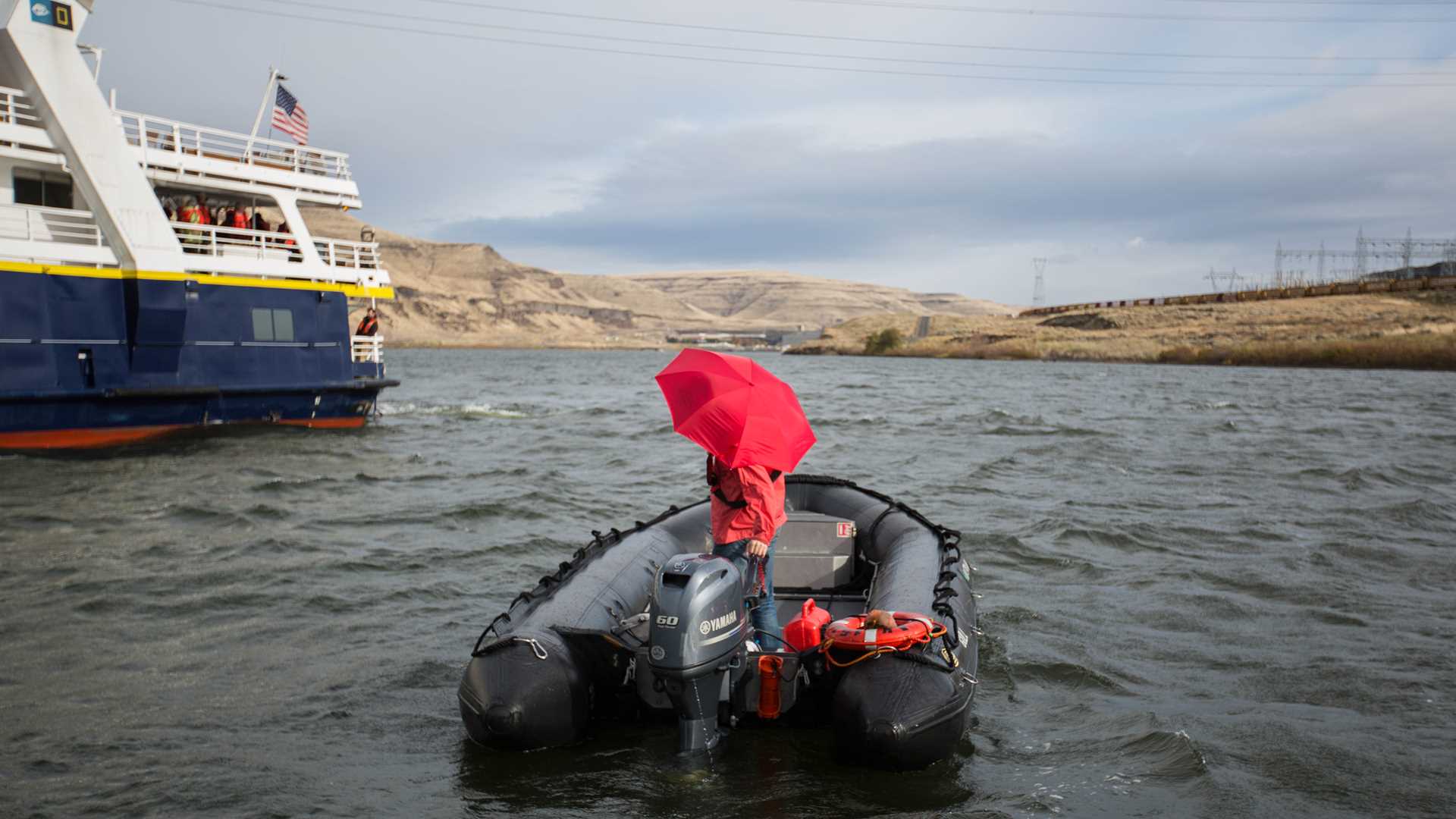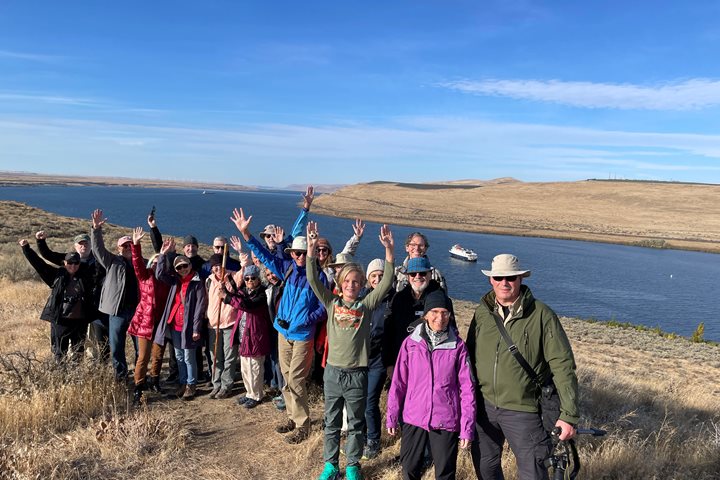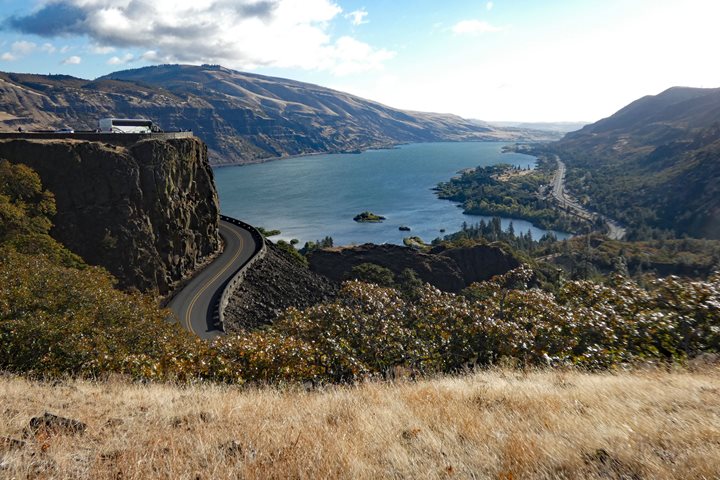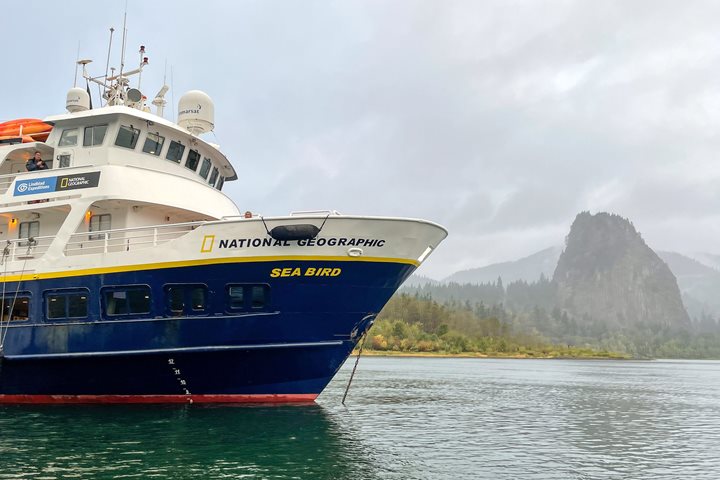We cruised all morning and turned from the Columbia onto the Snake River somewhere south of Pasco, Washington. Ice Harbor was our first of four Snake River dams. Historian Harry Fritz lectured in the morning on “The Truth About Lewis and Clark, Part III”. He returned the expedition from the Pacific Coast to St. Louis in 35 captivating minutes. Dam authorities allowed us to transit the Lower Monumental Dam (LoMo) in expedition landing crafts. Then it was lunch time, aboard the National Geographic Sea Bird.
The Palouse River originates in the mountains of the Idaho Panhandle. It flows southwesterly, north of Moscow, Idaho, and Pullman, Washington, across verdant wheat pastures, and empties into the Snake River. But the river itself was not our object of investigation. About seven miles from the Snake, the Palouse falls over a precipice and drops some 186 feet. Still, it’s not the waterfall itself, the central attraction of Washington’s Palouse State Park, that garners attention. The falls drop off into a plunge pool big enough to handle thousands of times as much water. It is a striking remnant of the massive Ice Age Floods, the latest just 13,000-15,000 years ago, that created the Channeled Scablands of central and eastern Washington. A lobe of the last great glacier crept south sufficiently to block the flow of the Clark Fork River, building up 500 cubic miles of water called Glacial Lake Missoula. But, if you were choosing material with which to build a dam, you would not choose ice. Ice has one property which makes it unsuitable for dam building—it floats. Eventually the dam broke, and water ten times the flow of all the great rivers of the world, half of modern Lake Michigan, drained western Montana in 48 hours. This happened at least 40, and maybe as many as 100 times. The geologist J. Harlan Bretz identified these features, formed by cataclysmic floods back in the 1020s. Today they are among Washington’s most scenic and visited destinations. National Geographic Sea Bird guests simply marveled at the site.
The Palouse River flows into the lake impounded by LoMo, and there we anchored. Guests also enjoyed expedition landing craft rides further up the river, and watched a pigeon dive-bombing a bald eagle. Yes, you read that right! Other guests kayaked up the river, in an afternoon when the wind died down and the sun broke out. We all returned to the ship eager for cocktails, Recap, a video preview, and dinner. Harry killed off the members of the Lewis and Clark expedition, including his favorite, Sergeant Patrick Gass, who died at age 99 in 1870—the last surviving member. Naturalist David Stephens regaled us all with little known aspects of beavers and pigeons. Expedition Leader Rab Cummings promised that tomorrow will be even better, but today will be hard to beat.









